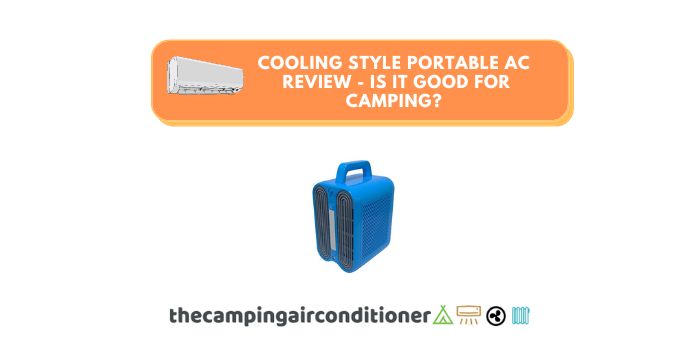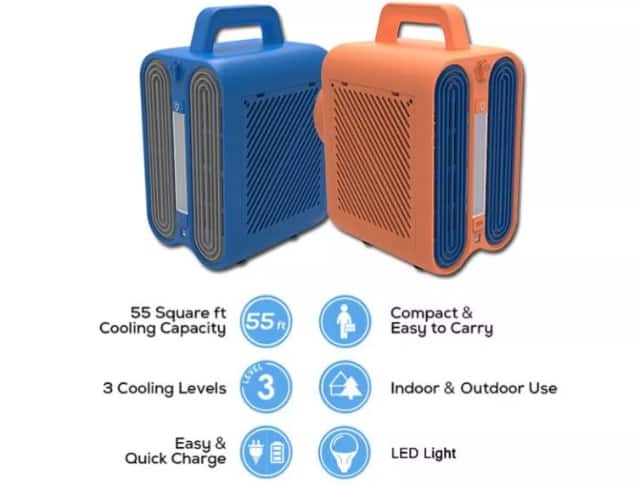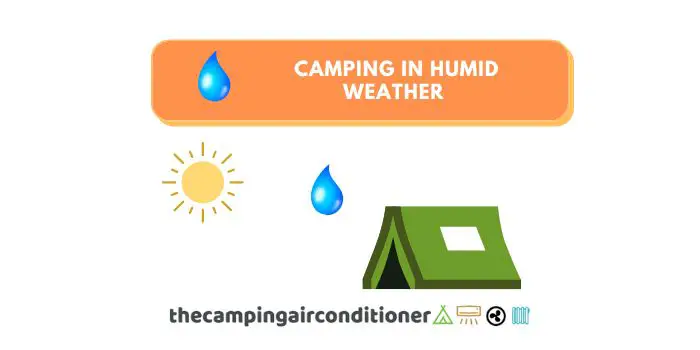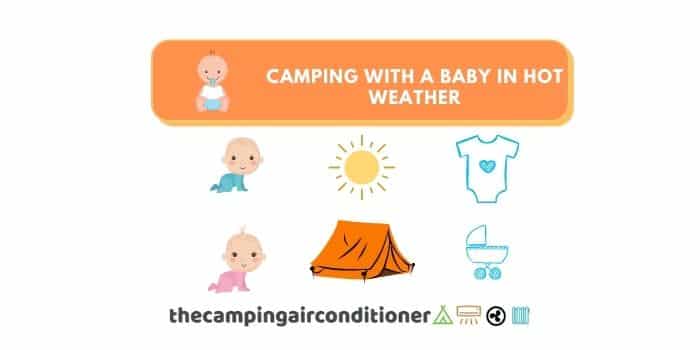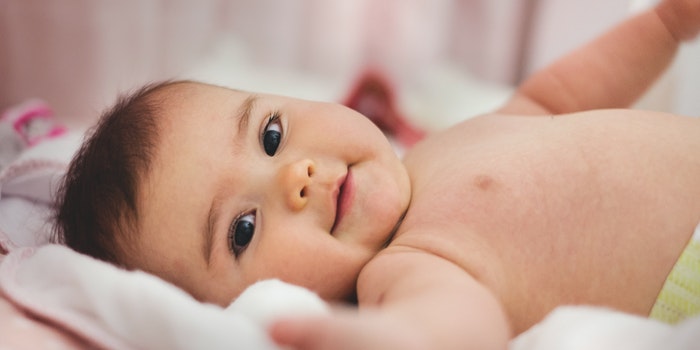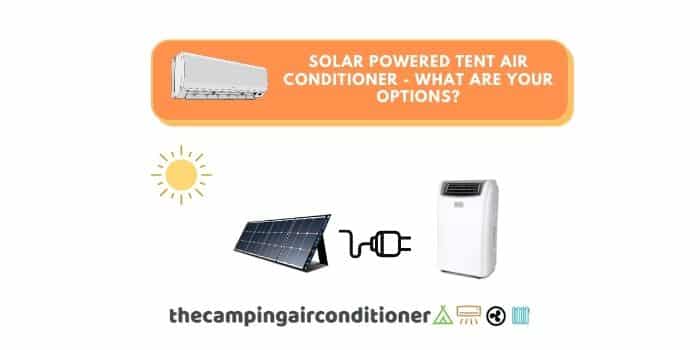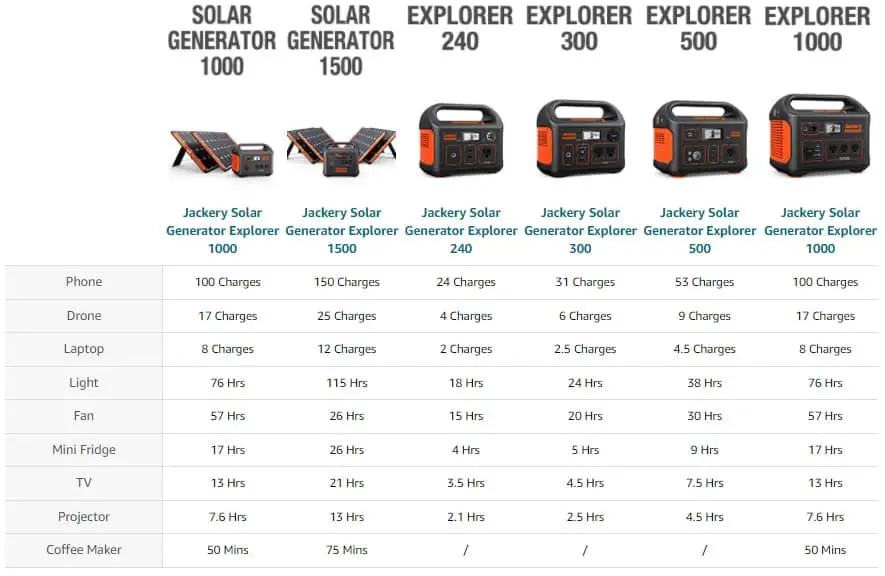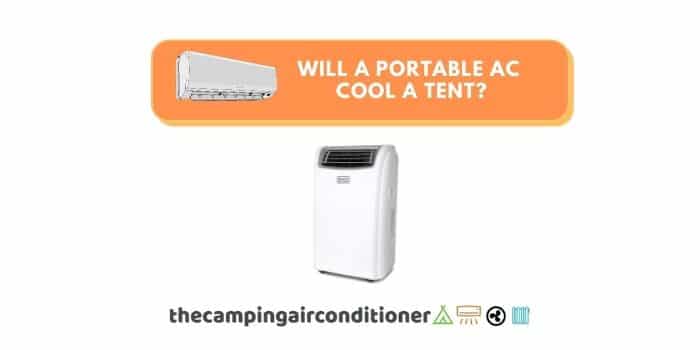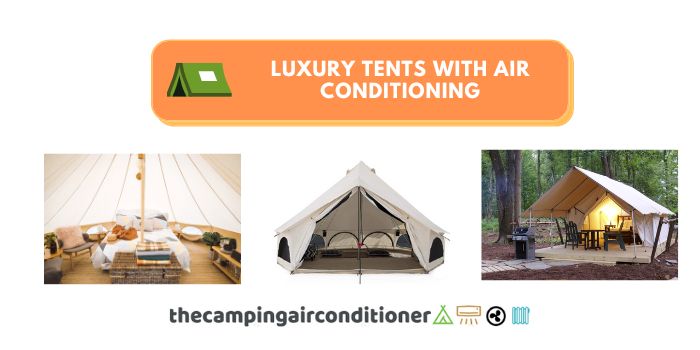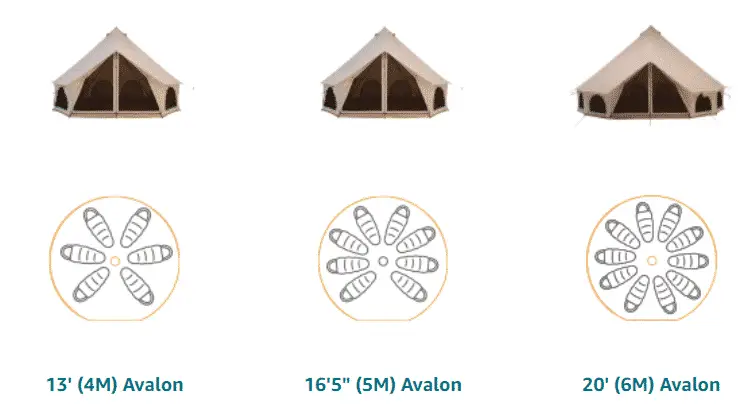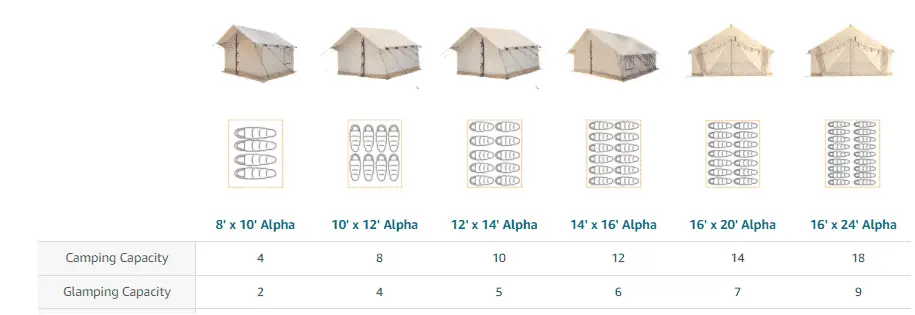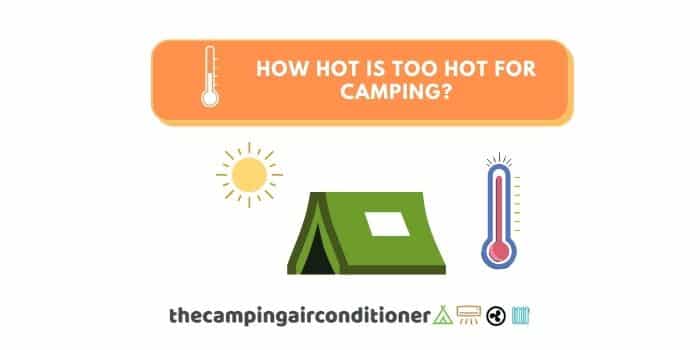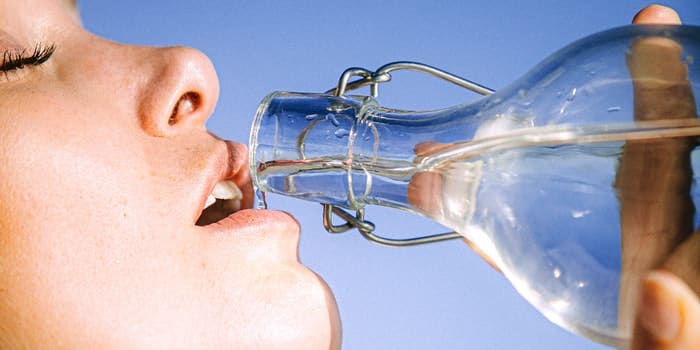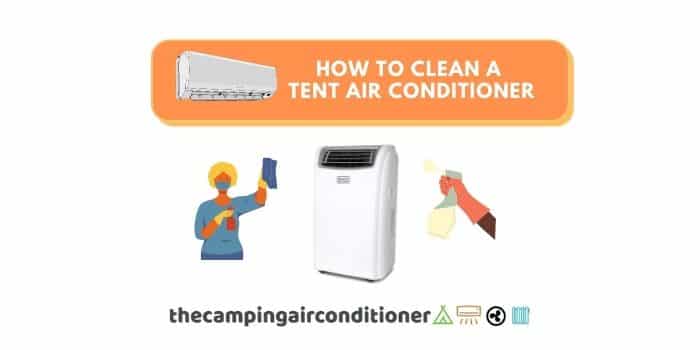EENOUR Portable Air Conditioner – Our detailed review
A Portable air conditioner might become an absolute necessity during the summer if you want to keep your tent cool and enjoy a comfortable night’s sleep.
Not only that, but a good portable air conditioner can also keep you and everyone in the tent safe from heat strokes and other heat illnesses, such as hyperthermia, which is a severe condition that happens when your organisms temperature is very high (i.e. temperatures above 104°F)
Among many alternatives, one of the most popular portable air conditioners on the market today is the EENOUR Portable air conditioner. More specifically, we’re talking about two models: the EENOUR QN650 and EENOUR QN750, which are very similar but come with slightly different features.
In this article, you’ll learn about this portable air conditioner, what makes it so popular, how it stacks up against the EENOUR QN 750 model, and whether or not it’s worth your money.
Read on to learn more.
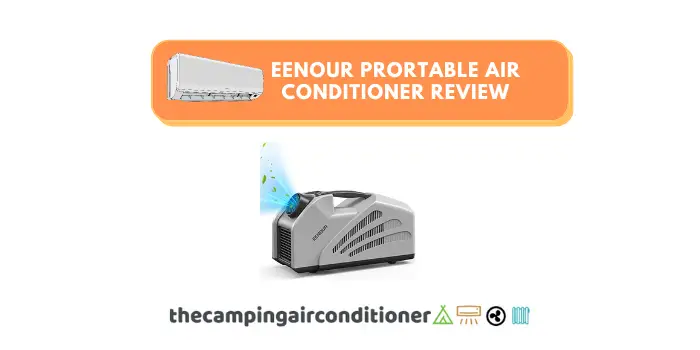
By the way, The Camping Air Conditioner is sponsored by readers. When you buy through one of our links, we may earn an affiliate commission at no extra cost to you.
EENOUR Portable air conditioner - Summary Review
In a hurry? Don’t worry. This is our summary review.
Eenour products are becoming very popular among people (and campers) looking for versatile air conditioning alternatives. They offer excellent mobility and good cooling output, with the QN750 model offering 2900 BTU (more than sufficient to cool down medium-sized tents for up to 6 campers).
Update – July/23 – It appears that Eenour is no longer manufacturing the QN650 Model, we just found a great alternative with excellent value for money – Soveign 2380 BTU Tent Air Conditioner(Click Here to Check Price)
The design is sophisticated, and embedded handlebars facilitate transportation and mobility. It will serve you well if you are also using it in your RV or car camping.
Even though both options are not battery-operated, they are 24-V compatible, which makes them easy to run from a solar power generator if you are camping off-grid.
So far, it is the most powerful portable AC with 24-V compatibility that I have ever seen on the market, which draws me a lot of attention (for example, the Coolingsytle portable ac only offers 1,700 BTU).
The downsides? In our opinion, even though it offers a significant cooling output for a battery-compatible model, it is slightly pricey, and if you have an electric hookup at your campsite, you might be better served with BlackDecker 8,000 Btu at a lower investment and higher cooling capacity (However, it is not battery-compatible).
It is also slightly noisy and you might prefer options with levels below 50dB (noise will vary according to operating mode).
- Cooling Output (up to 2900 Btu)
- Fast Cooling (Drops 16°F in just 5 minutes)
- Sophisticated Design and Portability
- 24-V battery compatible (lower power consumption)
- Excellent for Tents and RVs
- Easy to operate and install
- Pricey - Other options might offer better Value for Money
- Not the lightest option
- Can be noisy!
Our Verdict: These units are ideal if you are camping off-grid and have a generator or electric hookup close by. They are versatile ACs, which can be easily transported and installed and offer great cooling output.
However, if that is not your case, it might be good to consider other options, such as:
- Small tents and backpacking – Evapolar Evachill (USB-compatible)
- Large Tents (+8 campers) and long-term camping – it might be ideal picking a window AC unit – read this article and learn how to install them in your shelter.
- Medium-size alternatives – Soveign 2380 BTU Tent Air Conditioner
- RV Camping – install a mini split AC inside your vehicle, as detailed in this post.
EENOUR Portable AC - Detailed Review
There is no doubt that a good portable air conditioner will cool down your tent. And if you look for the best portable units on the market, you’ll likely come across the EENOUR models.
They packed with great features, a fair amount of power, and is a bit more affordable than most portable cordless AC units on the market.
While QN650 isn’t as strong as the QN750, it still offers a lot for an affordable unit. Here’s how it stacks up compared to its more expensive counterpart:
Cooling Ability
During the summer, your tent will get very hot, especially when it’s in the sun, and the best way to cool down the insides of a tent is by using an air conditioner. That being said, you need to make sure you get a unit with decent cooling ability in order to make the insides of the tent comfortable during the day and night.
To see how well this air conditioner can cool down a tent or area, let’s take a closer look at its cooling system. The QN650 uses a Panasonic Twin Cylinder Compressor. This is considered one of the top compressors on a budget on the market today. You can rest assured that it’s high quality and fully functional.
While the technology behind the air conditioner is great, does it work in the real world?
Yes, it does. The QN650 delivers 2,350BTU (and QN750 2,900 BTU), which is a fair amount of energy. As we have detailed in this post (how many BTU do I need for my tent AC), EENOUR models will easily cool down large tents (up to 8 campers), as long as they are well insulated and not directly exposed to the sun.
| Size | Volume (cubic feet) | Insulated Tent | No insulation (1.25X) | No insulation and sun exposure (1.5X) |
| Small Tents | 200 | 800 BTU | 1000 BTU | 1200 BTU |
| Medium Tents | 350 | 1400 BTU | 1750 BTU | 2100 BTU |
| Large Tents | 700 | 2800 BTU | 3500 BTU | 4200 BTU |
| Family Tents | 1250 | 5000 BTU | 6250 BTU | 7500 BTU |
Design and Weight
Both models come with an appealing and sophisticated design, which is modern and has a central air output facilitating airflow direction. This is great for those who want to cool down a specific area faster.
The embedded handle facilitates transportation (see picture below) but its weight is not ideal – The QN650, for example, weighs roughly 9.5kg, which might become a little bit unpractical for those who need to walk on foot for some camping spot or want extreme versatility.
However, in most cases, most portable air conditioners with compressors can be relatively heavy (compared to evaporative coolers, such as Evapolar Evachill, which only weighs 2 pounds!) and hard to carry over long distances on foot.
In our opinion, this model has a good and portable design when considering its cooling capacity and internal compressor. It isn’t as large as other portable ACs, and you can tell it’s designed to be carried on camping adventures. The shape isn’t that bulky, making the AC quite easy to transport (see table below for a quick comparison).
| Item | Eenour QN650 | BlackDecker 8,000 BTU | Evapolar Evachill |
| Cooling Capacity | 2,350 BTU | 8,000 | N/A – Evaporative Cooler |
| Weight | 9.5kg | 24kg | 0.9 kg |
| Price | $ | $ | $ |
Special Features
This air conditioner comes with a bunch of cool features that make it even more convenient to have on a camping trip, such as:
- Both have three fan speeds and a sleep mode. This means that you can adjust the AC to operate at the level that you want it to so that it can both meet your cooling and noise needs.
- Both also have an LCD control panel. This is a staple for most modern air conditioners as it makes switching between the different modes much easier even if you’re not tech-savvy.
- Both are VERY easy to install and use, and you won’t have any headaches with hoses, connections, etc.
Update – July/23 – It appears that Eenour is no longer manufacturing the QN650 Model, we just found a great alternative with excellent value for money – Soveign 2380 BTU Tent Air Conditioner(Click Here to Check Price)
What Are Good Alternatives to the EENOUR Portable Air Conditioner?
It’s perfectly understandable if you’re not keen on the EENOUR models. At the end of the day, everyone has different needs. So, if this model isn’t the one for you, there are plenty of great alternatives that you can consider, such as:
- For Small tents and backpacking – Evapolar Evachill (USB-compatible)
- Large Tents (+8 campers) and long-term camping – it might be ideal picking a window AC unit or BlackDecker 8,000 BTU
- Medium-size tent alternative – Cooling Style Portable AC
- RV Camping – install a mini split AC inside your vehicle.
| Item | Eenour QN650 |
Cooling Style | Evapolar Evachill |
Black&Decker 8,000 BTU | DELLA 12000 BTU |
| Cooling Capacity | 2,350 BTU | 1,700 BTU | N/A – Evaporative Cooler | 8,000 | 12,000 BTU |
| Weight | 9.5kg | 6.5 kg | 0.9 kg | 24kg | 18kg |
| Ideal For | Small and Medium Size Tents | Small and Medium Size Tents | Small Tents and backpackers | Large Tents | RV |
| Price | $$$ | $$ | $ | $$ | $$$ |
Update – July/23 – It appears that Eenour is no longer manufacturing the QN650 Model, we just found a great alternative with excellent value for money – Soveign 2380 BTU Tent Air Conditioner(Click Here to Check Price)
Conclusion
We personally love the EENOUR portable air conditioners. Both the QN650 and the QN750 are great, but if we were to pick one, we’d go for the QN650 as it offers more value for money, and honestly, it does the job extremely well.
Our tent can fit up to 8 people and every time I take the QN650 with us, I’m never left disappointed.








